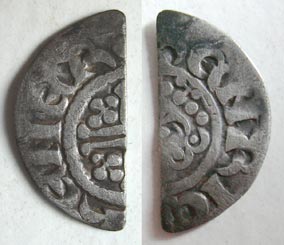William I |
Edward II |
||
William II |
Henry VIII |
||
Henry I |
Edward VI |
Anne |
|
Henry IV |
George I |
||
George II |
|||
Richard I |
|||
Edward IV |
|||
Edward V |
Cromwell |
William IV |
|
Richard III |
|||
John, 1199 - 1216
John is generally considered to have been one of England's worst kings. Before even getting the throne he managed to begin what would evolve into centuries of strife between England and Ireland. He then became famous for his rivalry with - and coup attempts against - his elder brother, Richard 1st. He is also notorious for losing the Crown Jewels in The Wash, which might have actually been faked to cover other expenses. And then, of course, he signed the Magna Carta, thus establishing the basis for many of the rights which we have come to expect as members of a free and democratic nation. If he'd signed it willingly, or even thought it up himself, maybe history would have thought better of him. However, by the end of his reign the barons of England were so fed up with him they had even offered the throne to Louis, son of Philip II of France. |

|
Short-cross penny, type 5b1 (To read about the discovery of this coin, see 'Stupid Brothers 7') This is known as a 'short cross' penny. Later, the cross on the reverse (i.e. non-monarch head) side, was extended to the edge of the flan. These were known as 'long cross' coins. The idea was that if the ends of the cross were visible, the coin hadn't been clipped and was therefore of full weight. Nice idea, but it didn't really fix the problem. The reverse on this coin shows definite signs of having been 'double struck'. Spink no. 1351 |

|
Cut penny, 5b2 or 5c Penny coins were sometimes cut into halves and even into quarters, thus creating halfpennies and 'farthings'. This was probably done at the mint rather than at the hands of the public, as they are invariably clean and accurate cuts, which would have been unlikely if just anyone could have done it when they needed smaller change. Spink no. 1351 or 52 |
Back to top
Home |
Collection |
Cartoons |
Stories |